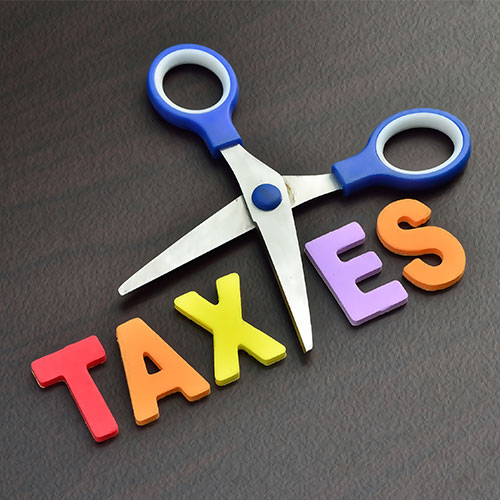Source/Contribution by : NJ Publications
The financial year 2017-18 is drawing to a close. It’s time people start looking into the tax planning process, reviewing their existing tax investments, and evaluating various options to fill in the gap, if any. Although the lion’s share is occupied by conventional tax saving options like, PPF, NSC, Bank FD, traditional insurance policies, etc., yet over the years, the uncustomary, Equity Linked Savings Schemes(ELSS) in Mutual Funds has started gaining traction.
What is ELSS?
ELSS is a Mutual Fund scheme, which predominantly invests in stocks, has a lock in period of 3 years and is eligible for tax deduction of upto Rs 1.5 lacs u/s 80C of the Income Tax Act. An investor can save tax of upto Rs 46,350* by investing in ELSS. (*For a resident individual falling under the 30% tax slab)
Why ELSS?
Coming to the point, the factors behind ELSS’ consistently rising popularity, the reasons why you should invest in ELSS for saving tax.
So, there are various aspects which has led the entry of ELSS into the investors preferred tax zone, like:
> Drawbacks of Conventional products: The primary reason behind ELSS’ developing fame is the traditional products are gradually loosing their sheen. This phenomenon can largely be attributed to the consistently falling interest rates, apart from the high lock-ins and other issues. With falling returns and that too taxable in most cases, the net interest received is small. And if you deduct the inflation rate, the return is negligible or may even run into negative. So, the investors are on the lookout for tax products with better returns.
> Superlative Returns: The conventional products give fixed returns, but may not be able to withstand the inflationary pressure. ELSS do not guarantee returns but has been able to generate superior returns in the past, due to its underlying asset class ‘Equity’, which has potential for high growth.
Following are the performance stats of ELSS schemes over the past 15 years
| 3 Years | 5 years | 10 Years | 15 Years | |
| ELSS Returns* | 13.83% | 18.60% | 8.75% | 21.74 |
(*Average of 30 ELSS schemes; Returns as of 31st Dec 2017)
The growing inclination towards ELSS do not require any explanation, the numbers alone do the talking.
> Tax free returns: Secondly, though all tax savers help the investor save tax, but not all of them offer tax free returns. It’s just ELSS and PPF where not just the investment amount, but also the gains are exempt from tax. But in the case of PPF, the investor has to wait for 15 long years to savour the tax free returns.
> Tax Free Dividends: Not just returns, but the Dividends received from investing in an ELSS scheme are tax free in the hands of the investor. So, basically ELSS schemes enjoy the Exempt, Exempt, Exempt tax status. The Investment, the Returns on the Investment and the Dividends from the Investment, are all tax free.
> Lowest Lock in: Another major reason behind ELSS’ popularity is it offers the lowest lock-in of 3 years amongst all tax saving investments. Here, you must note that the ELSS after all is Equity, and hence it is subject to short term volatility, and so the 3 years lock in should not be construed as the investment holding period. You must give it a long time, at least 10 years, to be able to exploit Equity’s potential. An earlier withdrawal should be done in acute circumstances when you are in dire need of money. The low lock in of ELSS is intended to provide flexibility to the investor, to provide liquidity in emergencies, which is not available in other tax products like PPF or NSC, etc. It’s only under certain specified extreme circumstances and/or on payment of a penalty, that the investor may be able to withdraw from the traditional products.
> Helps in Goal Achievement: Lastly, ELSS is not just about saving taxes, it helps investors in creating massive wealth and achieving their life goals. The ELSS investments of the investor can be linked to a life goal, and the superior returns generated, as seen in point 1 above, can place them multiple steps ahead on their goal achievement path.
Here is a table to explain the impact of superior returns on goal achievement.
Investment for Retirement Goal
| PPF | ELSS | |
| Investment Amount | Rs 5 Lakhs | 5 Lakhs |
| Investment Date | 1st Jan 2003 | 1st Jan 2003 |
| Return | 8% | 21.74% |
| Maturity Value as on 1st Jan 2018 | Rs 15.86 Lakhs | Rs 95.6 Lakhs |
(*Average of 16 ELSS schemes; Returns as of 31st Dec 2017)
The investor who invested Rs 5 Lakhs in the average of ELSS schemes in 2003, would have got a whopping Rs 95 lakhs on his retirement, as compared to an investor who chose PPF and has to settle down for just Rs 15.86 lakhs. That’s the Magic of Equity being gorgeously pulled off by ELSS schemes, and empowering the investors with massive wealth to achieve their goals.
So the bottomline is, the tax bell is ringing, and rather than randomly picking up any conventional product for saving taxes, it’s ideal that you sit with your advisor, study the alternates, consider the benefits being offered by ELSS and make a wise choice.
